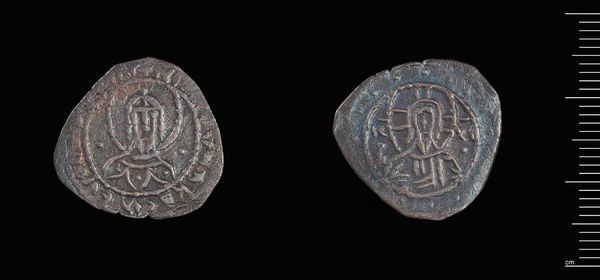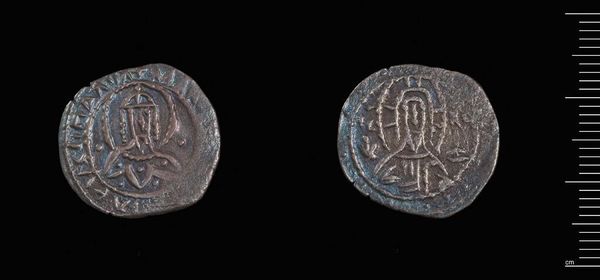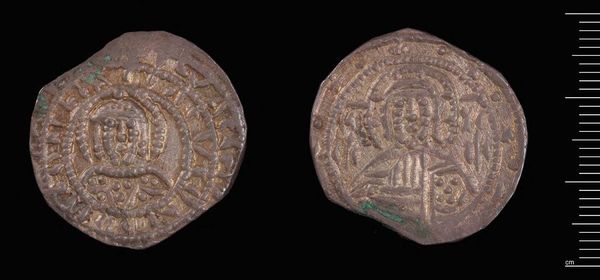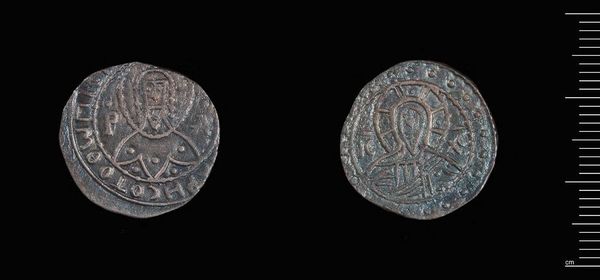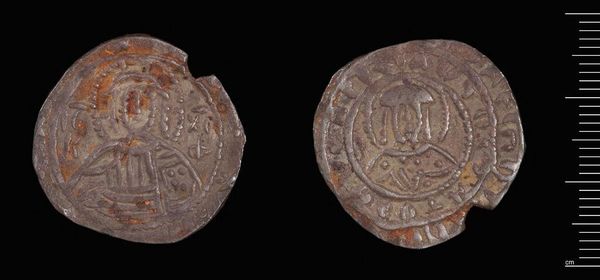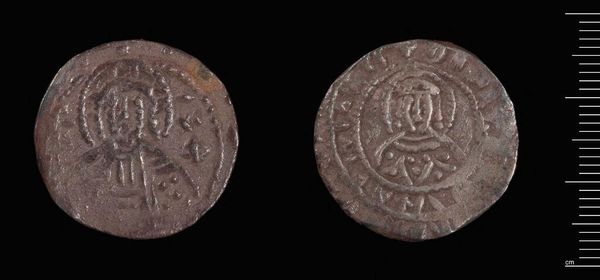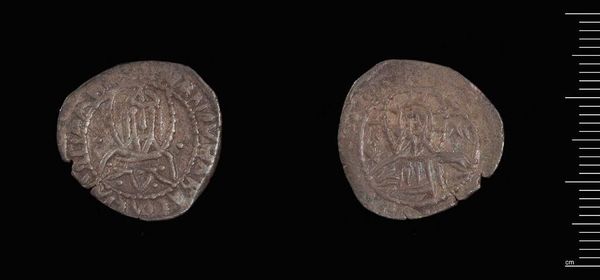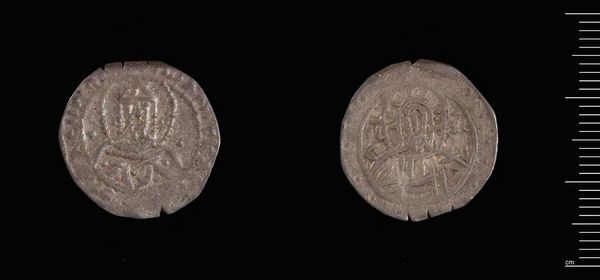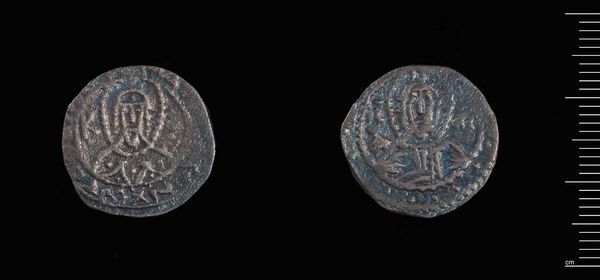
Dimensions: 3.72 g
Copyright: CC0 1.0
Curator: At the Harvard Art Museums, we have a Half-Stavraton, a coin, minted by Manuel II. It weighs a mere 3.72 grams. Editor: There's a somber mood evoked by the aged metal, and the images of the emperor and what appears to be Christ. Curator: The low relief and incised lines are quite characteristic of Byzantine coinage from this period. It's a study in flatness, the figures reduced to near abstraction. Editor: And a study in power, wouldn't you say? Who gets to be depicted, what symbols are chosen, and who controls the mint. Coinage served as propaganda. Curator: Indeed. The semiotics are fascinating: the rigid frontality, the halos, the inscriptions that are strategically placed within the circular frame, all create meaning. Editor: It makes you wonder about the average person holding this object, what it meant to them to possess a piece of the emperor's image. Curator: Precisely! These material objects offer insights into the Byzantine era's sociopolitical and religious landscapes. Editor: I am struck by the potential of this coin to reveal insights into Byzantine visual culture. Curator: And I, in turn, am reminded of the complexities inherent in even the smallest of artworks.
Comments
No comments
Be the first to comment and join the conversation on the ultimate creative platform.
